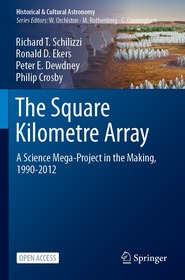
Exoplanet Detection Methods
Uncovering the Evolution of Planetary Systems
Series: Space and Planetary Advances;
- Publisher's listprice EUR 162.99
-
67 600 Ft (64 381 Ft + 5% VAT)
The price is estimated because at the time of ordering we do not know what conversion rates will apply to HUF / product currency when the book arrives. In case HUF is weaker, the price increases slightly, in case HUF is stronger, the price goes lower slightly.
- Discount 10% (cc. 6 760 Ft off)
- Discounted price 60 840 Ft (57 943 Ft + 5% VAT)
Subcribe now and take benefit of a favourable price.
Subscribe
67 600 Ft

Availability
Not yet published.
Why don't you give exact delivery time?
Delivery time is estimated on our previous experiences. We give estimations only, because we order from outside Hungary, and the delivery time mainly depends on how quickly the publisher supplies the book. Faster or slower deliveries both happen, but we do our best to supply as quickly as possible.
Product details:
- Publisher Elsevier Science
- Date of Publication 1 January 2026
- ISBN 9780443316265
- Binding Paperback
- No. of pages340 pages
- Size 229x152 mm
- Weight 450 g
- Language English 700
Categories
Long description:
Exoplanet Detection Methods: Uncovering the Evolution of Planetary Systems is a comprehensive guide that delves into modern techniques for detecting exoplanets. It explores current methods while unravelling the fascinating story of planetary system evolution. Each chapter is meticulously structured to introduce detection methods, offer step-by-step instructions, analyze datasets, and present available instrumentation. This book caters to both beginners and seasoned researchers, providing them with the means to understand the characteristics and evolutionary timelines of different planetary populations.
Beyond methodological insights, the book includes online proposal case studies, curated lists of resources, and further detailed step-by-step methods. This makes it an indispensable companion for those venturing into exoplanetary studies or working on planetary demographics.
Table of Contents:
1. Introduction
2. Radial velocity
3. Transit photometry
4. Direct imaging and interferometry
5. Microlensing
6. Astrometry
7. Transit time variation
8. Other Detection Methods
9. Machine Learning and Exoplanets
10. Future Perspectives








